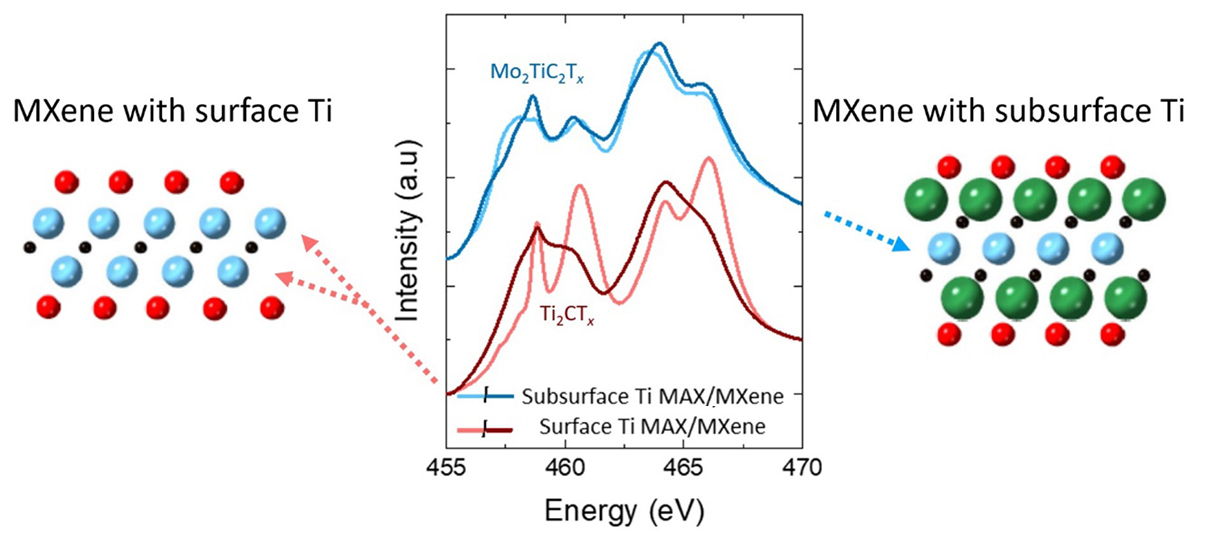MXenes (pronounced “maxenes”) are 2D materials that can host a rich array of distinct chemical compositions that can be tuned for a broad range of applications, from energy storage to water purification. Described by the general chemical formula, Mn+1XnTx (where M = transition metal, X = carbon or nitrogen, and T = surface functional groups), these compounds are commonly synthesized from a parent Mn+1AlXn (MAX) phase. The surface groups are known to directly affect MXene functional properties; however, a detailed understanding of how the surface groups influence electronic structure within distinct MXene layers has been lacking.
Using x-ray absorption spectroscopy at ALS Beamline 4.0.2 and NSLS-II Beamline 23-ID-2, researchers studied MXenes in which the transition metal Ti is located at surface sites (Ti2CTx and Ti3C2Tx) and those with Ti at subsurface sites only (“double-M” MXenes: Mo2TiC2Tx and Cr2TiC2Tx). The impact of the surface species on electronic structure was measured by comparing the Ti L-edge spectra of both types with that of their parent MAX compounds (i.e., before addition of the surface groups). The results, confirmed by spectral analysis and theory-based calculations, showed that the surface groups alter the electronic structure of Ti at the surface, but not below it.
Based on these observations, the researchers proposed that double-M MXenes offer a pathway toward engineering expanded functionality that’s independent of surface groups, by having the subsurface M-site layers host the desired electronic, magnetic, or topological properties. In the future, the researchers plan to explore this design strategy to realize MXenes with robust magnetic ordering.

Y. Yang, K. Hantanasirisakul, N. Frey, B. Anasori, R.W. Green, P. Rogge, I. Waluyo, A. Hunt, P. Shafer, E. Arenholz, V. Shenoy, Y. Gogotsi, and S.J. May, “Distinguishing electronic contributions of surface and sub-surface transition metal atoms in Ti-based MXenes,” 2D Mater. 7, 025015 (2020), doi:10.1088/2053-1583/ab68e7. The experimental work was supported by the DOE Office of Science, grant no. DE-SC0018618.